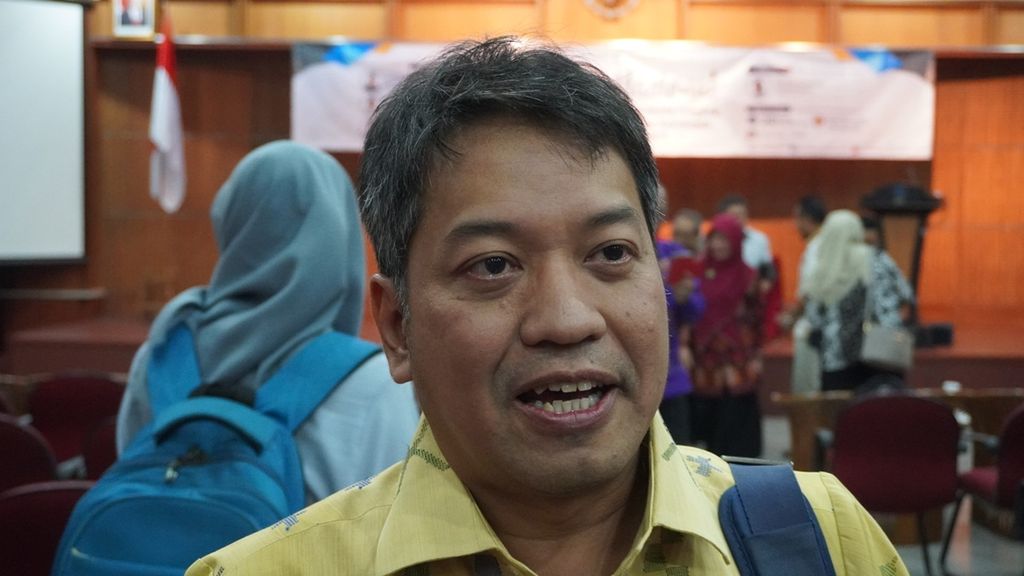Observing Shifts in Migration Patterns
The downward trend in births and deaths will cause migration to become a major factor of demographic change in Indonesia. Demographic changes need to be responded to with appropriate adjustments in development planning.

Kompas' main coverage for two consecutive days (4/5/2023-5/5/2023) has focused on the interesting topic of migration. It revealed that in the last 10 years there has been a shift in the pattern of “recent migration”, in that major cities are no longer a migration destination, but buffer cities.
In demography, migration is the movement of people from one place to another across administrative boundaries with an aim to settle down. Migration, together with birth and death rates, affect the size, structure and distribution of the population of a region. In its coverage, Kompas discusses recent migration, which deems an individual to be a recent migrant if their place of residence is different from the previous five years in a population survey.
Data from the National Socioeconomic Survey (Susenas) shows that migration destinations from 2013 to 2022 were dominated by buffer zones in metropolitan areas. Over the last 10 years, the Jakarta administrative area has not been the main migration destination, but the Bogor-Depok-Tangerang-Bekasi (Bodetabek) area. In fact, in the 2017-2022 period, the population of Jakarta decreased 5.75 percent due to migration.
Also read:
> Jakarta No Longer a Migration Destination
> Moving to the City for Better Life
The longform data of the 2020 Population Census shows that apart from Jakarta, Papua and East Kalimantan were the Indonesian provinces with the lowest net migration rates with a negative value, meaning that there were more migrant departures than migrant arrivals in 2017-2022. This is different from the situation in 1990-2010, when migration outflow was mostly seen by Central Java, East Java and North Sumatra.
In 2022, the cities of Depok and Deli Serdang were the areas with the highest number of migrants in Indonesia. Sidoarjo had the highest number of recent migrants in the Gresik-Bangkalan-Mojokerto-Surabaya-Sidoarjo-Lamongan (Gerbangkertosusilo) metropolitan area.
It is interesting to note that the migrants’ region of origin were generally neighboring areas. For example, South Jakarta was the source of the highest migration inflow to Depok. The majority of migrants to Bogor city came from Bogor regency. Migration to Sidoarjo regency was dominated by residents from Surabaya city. Gresik regency also received many migrants from Surabaya city.
Nearly 90 percent of the migration inflow to Deli Serdang regency was from the city of Medan, while the remaining small proportion came from Aceh Singkil, Lahat and Asahan. In the Makassar-Maros-Sungguminasa-Takalar (Mamminasata) metropolitan area, Gowa and Maros had the highest increase in migrants, of whom 70 percent were from Makassar. This pattern occurred in almost all metropolitan areas.

Internal migration in other countries
The United Nations migration agency estimates that global migration reached 1.044 billion people (2020). In detail, 281 million migrated externally and the remaining 763 million migrated internally (within a country). One in seven people in the world is a migrant and more than 73 percent of migrants are working age.
The World Bank and the International Monetary Fund (2013) explain that migration is closely related to welfare. Migration from villages to cities has a significant impact on reducing poverty. Migration from the agriculture to non-agriculture sectors results in added value and better welfare. However, migration patterns in a number of countries have started to change.
From the initial movement of population from rural to urban areas, migration has shifted from urban to urban areas in line with changes in the economic structure and level of urbanization. The higher the proportion of a country's urban population, the more dominant urban to urban migration will be.
Also read:
> Migration and City Optimization
> Equal Development Distribution, Migration Control
We can learn from migration patterns in Japan and Latin American countries. In the early 1950s, internal migration in Japan occurred from the countryside to major cities in metropolitan areas, such as Tokyo, Osaka and Nagoya. Migration rates peaked in 1972, and then gradually declined until 2020. Migration patterns have slowly changed from rural to urban areas over relatively long distances to migration over short distances between cities within a metropolitan area. Over the last 60 years, migration patterns in Japan have showed a changing trend from rural to urban migration to urban to urban migration, according to the findings of Yoshitaka Ishikawa (2020).
Rodriguez-Vignoli and Rowe's research (2018) shows that migration patterns in Latin America have changed from rural to urban migration to urban to urban migration, after the economic structure that was initially dominated by the agricultural sector changed to industry and services. Urbanization continues as the number of residents in small and medium cities increases, while migration patterns between urban areas are dominant.
Migration data
Of course, special research is needed to analyze the shift in Indonesia’s internal migration patterns. However, the data shows that migration in Indonesia is currently dominated by urban to urban migration involving the movement of people over short distances between regions in the same metropolitan area.
What is the suspected cause of this phenomenon?
First, it is necessary to understand that all buffer zones become part of the single economic area of the core city. Jakarta is smaller in its administrative area than its economic area, which includes the entire Jabodetabek (Greater Jakarta) metropolitan area. Thus, even though there has been a shift in the migration destination in terms of administrative area, the economic destinations are still the same. This shows that economic motives are the main reason for internal migration compared to other reasons, such as education and family.
What is the suspected cause of this phenomenon?

Second, urban to urban migration is related to economic development and residential development in buffer zones. Migration data refers to places of residence and not workplaces, so it is clear that migration reflects changes in residential patterns by region.
The magnitude of internal migration in metropolitan areas can be analyzed by means of the gravity model of migration. Migration flows are determined by the economic level and distance between regions. Expanding economic activity in a buffer zone will attract migrants.
At the same time, access to interregional transportation in metropolitan areas is improving, reducing transportation costs and attracting residents of other areas located close to each other. High land prices in core cities also have an impact on high cost of living, encouraging population mobility to buffer cities with lower living costs.
Also read:
> Global Demographic Changes and the Future of Indonesia
> The Earth and Its 8 Billion Inhabitants
The shift in migration patterns in Indonesia appears to be similar to what has occurred in Japan and Latin American countries. The increase in non-agricultural economic activities, followed by an increase in the proportion of the urban population (urbanization), has changed the pattern of migration from rural to urban previously to urban to urban.
The downward trend in births and deaths will cause migration to become a major factor of demographic change in Indonesia. Demographic changes need to be responded to with appropriate adjustments in development planning. Public services, such as transportation, education, health and housing, and the spatial distribution of the workforce must follow the demographic changes. The availability and utilization of migration data becomes very important.
The challenge is that there is no specific migration survey and the use of migration data is still limited. Unlike births and deaths that occur only once per person, migration is a repeat occurrence in a population.
Demographic changes need to be responded to with appropriate adjustments in development planning.
A strategy is needed to build better migration data by first strengthening population administration through the orderly registration of population movements. Migration is a demographic phenomenon that must be reported because it results in changes to population records. A mechanism of incentives is needed for migrants to voluntarily report their movements.
The second is to conduct a household survey specifically for migration. The aim is to estimate accurately the number and flow of migration as well as the characteristics of migrants. For round-trip and circular migration, we can take advantage of big data from cell phones or social media. With complete and accurate migration data on its population, Indonesia can compile an origin-destination (OD) matrix of interregional migration. Once this is achieved, both national and regional development performance will undoubtedly become more optimal and adaptive to any demographic change.

Sonny Harry B Harmadi.
Sonny Harry B. Harmadi, Chairman of the Statistical Society Forum (FMS) working group, general chairman of the Indonesian Population Coalition (KKI), economics and demography lecturer at the 10 November Institute of Technology (ITS)
This article was translated by Kurnia Siswo.